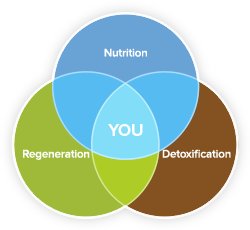Vibrant Life Oklahoma offers integrative/complimentary cancer treatment through IV Laser Therapy. After receiving chemotherapy, most patients feel weak, sick, exhausted, and their body is very run down. IV Therapy helps to restore the nutrient value and assists chemotherapy in killing cancer sells. It does not interfere with the chemotherapy, but is a complimentary treatment.
For more information on how Vibrant Life Oklahoma can customize a plan that fits your needs, call 918-342-9803.
Integrative Cancer Treatment – IV Therapy
According to one estimate, nearly 40 percent of men and women will be diagnosed with cancer at some point during their lifetime. Anyone living with this disease knows that it can take a toll on the immune system, especially when treatment involve various medications, chemotherapy, and radiation therapy. Developed by Dr. John Myers, intravenous therapy (IV therapy) is a treatment meant to complement, but not replace, traditional approaches to treating cancer.
What Is Integrative Cancer Treatment?
Integrative cancer treatment refers to combination of traditional medical treatments for cancer (e.g., chemo, radiation therapy, prescription cancer drugs, and surgery) and complementary therapies. It’s an approach to cancer care that has some compelling scientific support. In fact, there’s a growing body of evidence suggesting this approach to care may have benefits for cancer patients before, during, and after they are treated for cancer. One type of integrative cancer treatment is IV therapy.
What Is IV Therapy?
IV therapy is a treatment that involves the intravenous delivery of nutrients to help the body build up a better immune system defense against diseases like cancer. It’s well-known that the human body can benefit from the nutrients contained in many vitamins, when absorbed in correct dosages. This is what’s done with IV therapy.
How Does IV Therapy Work?
Usually performed in a doctor’s office or clinic, IV therapy delivers beneficial nutrients directly into the bloodstream, bypassing the digestive system altogether. Doing so prevents nutrients from being affected by stomach acid and other parts of the digestive process. The result is high tissue saturation, which can give the body’s immune system a better boost. Because nutrients are directly delivered, the response from the body is immediate. The way nutrients are administered by IV will depend on several factors, including:
• Patient’s overall health
• Responses to existing cancer treatments
• Type of cancer involved and the areas of the body affected
• Whether or not there are specific nutritional deficiencies that need to corrected
What Types of Vitamins/Nutrients May Be Administered?
Different mixtures of nutrients can be given with IV therapy. Intravenous high-dose vitamin C treatment addresses a variety of immune system problems. Higher levels of vitamin C also increase production of hydrogen peroxide, which is toxic to cancer cells.
In order to kill more cancer cells, hydrogen peroxide may be directly delivered by IV. Upping H2O2 in the bloodstream also triggers the release of more oxygen molecules. Even a single oxygen molecule can do some serious damage to cancer cells. Oxygenated cells also make it easier for toxins to pass out of the body.
When delivered by IV, alpha lipoic acid (ALA) attaches to unstable molecules called free radicals that can damage cells and make it easier for cancer to spread. ALA also increases the body’s production of antioxidants such as coenzyme Q10 and glutathione (GSH) and ups levels of vitamins C and E.
IV therapy with glutathione will boost levels of what’s termed the “mother of all antioxidants.” This amino acid basically grabs hold of of toxins and leads them out of the body. Glutathione is also poorly absorbed orally.
What’s referred to as a “Myers’ Cocktail” is a type of IV therapy with a mixtures of vitamins and minerals. It provides a serious helping hand to the immune system that may also ease the fatigue sometimes experienced following chemo therapy sessions.
Chelation therapy reduces free radical damage by removing heavy metals from the bloodstream. During treatment, ethylene diamine tetraacetic acid is delivered intravenously. The EDTA amino acids links with “heavy metals” such as iron and lead to help the body achieve a better balance of nutrients. This type of IV therapy may also prevent some forms of cancer from developing.
How Effective Is IV Therapy?
Studies involving IV therapy done with IV-delivered vitamin C suggest patients could enjoy an improved quality of life and fewer side effects from other treatments. Studies also show that vitamin levels remain higher and in the bloodstream longer when delivered by IV instead of being taken in oral form. Other studies have found no serious side effective from IV therapy when it’s combined with chemotherapy. Another study of ovarian cancer patients found that most participants reported fewer side effects when receiving chemo and six months after chemo therapy treatment ended. Similar results have been seen in patients with non-small cell lung cancer.
Traditional medicine is still typically best for tumors considered too aggressive to respond to integrative cancer treatment, IV therapy, or alternative medication. However, under the right circumstances, intravenous therapy has been shown to produce fewer side effects in some patients. It also tends to be well-tolerated. Additionally, improved immune system functioning may make it easier for cancer patients to tolerate chemo and other cancer treatments and medications. Ultimately, patients often benefit when the right blend of traditional and complementary care is found.
